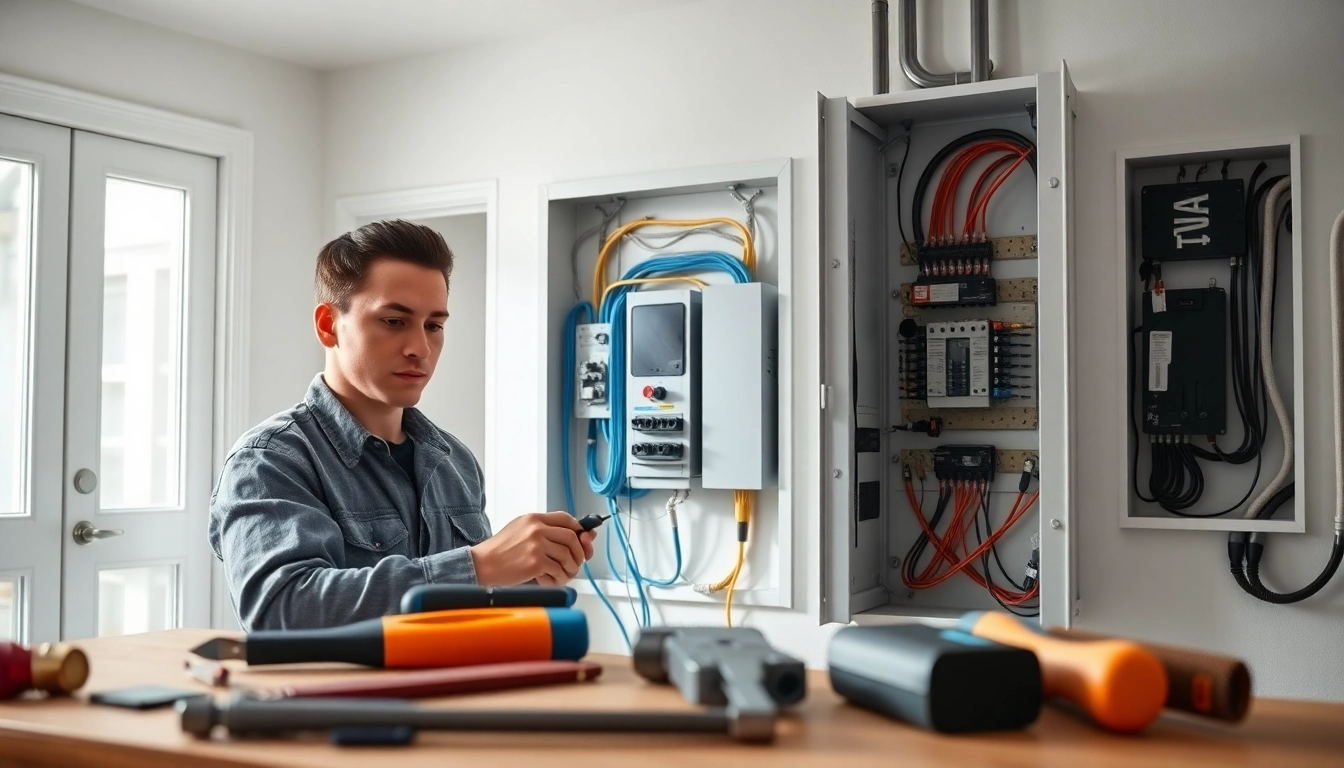Understanding the Electrical Panel: What You Need to Know
Definition and Function of an Electrical Panel
An electrical panel serves as the primary hub for power distribution in a residential or commercial electrical system. Often referred to as a breaker box or fuse box, the electrical panel is where power from the utility provider enters a building and is divided into various circuits that feed electricity to different areas and appliances. The main function of an electrical panel is to manage the power distribution efficiently and safely, while also providing protection against overloads and short circuits.
Every electrical panel comprises circuit breakers, which automatically cut off power when they detect an overload or fault in the wiring. This essential equipment helps prevent electrical fires and damage to appliances, ensuring a safe environment for occupants.
Components of an Electrical Panel
The key components of an electrical panel include:
- Main Breaker: This is a switch that controls the flow of electricity from the utility to the circuit breakers. It can be turned off to cut power to the entire panel.
- Circuit Breakers: These are protective devices that prevent overloads and short circuits. Different circuits have different amp ratings based on the appliances they serve.
- Bus Bars: These conduct electricity and distribute it to the circuit breakers. They are usually made of copper or aluminum.
- Grounding System: This system connects the electrical panel to the ground to prevent electrical shocks and provide a safe path for stray electricity.
- Neutral Bus Bar: This component connects the neutral wires from all circuits and ensures that electrical current returns safely to the transformer.
Types of Electrical Panels Available
When selecting an electrical panel, several types must be considered based on specific needs:
- Load Centers: These are the most common type of electrical panels used in homes. They distribute electricity throughout the building and allow for circuit additions.
- Main Breaker Panels: These panels contain a main circuit breaker and distribute power to other branch circuits. They are essential in larger homes.
- Sub-Panels: These are smaller panels connected to the main panel, used to extend power to remote areas like garages or workshops.
- Smart Panels: The evolution of standard panels, smart panels offer real-time monitoring and automated power management. They are integrated with home automation systems for enhanced functionality.
Signs It’s Time to Upgrade Your Electrical Panel
Increased Electrical Demand and Usage
As technology advances, the number of electrical devices in homes has significantly increased. From energy-efficient appliances to smart home devices, this high demand can lead to an insufficient electrical panel. If you frequently run multiple high-demand appliances at once and experience flickering lights or tripped breakers, it might be time to upgrade your panel.
Frequent Circuit Breaker Trips
If your circuit breakers are tripping often, it is a clear indication that your electrical system is overloaded. When a circuit is unable to handle the electrical load, the breaker trips to prevent potential hazards, such as fires. Frequent trips indicate that your current panel cannot accommodate your power requirements, suggesting a necessary upgrade.
Age of Current Electrical Panel
The age of your electrical panel is also a crucial determinant for upgrading. Electrical panels typically last around 20-30 years. If your panel is nearing this age and particularly if it is an outdated model, it may lack modern safety features and efficiency standards. Upgrading can enhance safety and reliability.
The Benefits of Upgrading Your Electrical Panel
Improved Safety and Compliance
Upgrading your electrical panel significantly enhances safety. Newer models comply with current electrical codes and standards, reducing the risk of hazards such as overheating or electrical fires. Moreover, modern panels come with features such as ground fault circuit interrupters (GFCIs) and arc fault circuit interrupters (AFCIs), which provide additional layers of protection.
Enhanced Energy Efficiency
Older electrical panels are often not designed to handle today’s energy demands efficiently. Modern electrical panels enable better management of electrical loads, ultimately leading to improved energy efficiency. This could manifest as lower utility bills and a reduced environmental footprint as homes can utilize renewable energy sources more effectively.
Boosting Home Value
Upgrading your electrical panel does not just improve safety; it can also increase your home’s value. Potential buyers often seek homes with modern electrical systems that meet safety standards. An upgraded panel can serve as a selling point, making your property more attractive in a competitive market.
How to Choose the Right Electrical Panel for Your Needs
Evaluating Your Electrical Requirements
The first step in choosing the right electrical panel is assessing your household needs. Consider how many appliances, devices, and systems you need to power. A 100-amp service may suffice for a smaller home, whereas larger homes may require 200 amps or more. Evaluating current and future needs can help guide your decision.
Consulting with a Licensed Electrician
It’s crucial to consult with a licensed electrician when choosing a panel. They will assess your electrical system, recommend appropriate upgrades, and ensure compliance with local regulations. Their expertise guarantees that you select a panel that maximizes safety and efficiency.
Understanding Different Brands and Models
With numerous brands and models on the market, understanding the distinctions can be overwhelming. Leading brands include Square D, GE, and Siemens, each offering unique features and reliability. Research reviews and warranties, and consult your electrician about which brand meshes well with your electrical needs and local codes.
Installation Process: What to Expect
Preparing Your Home for the Upgrade
Before installation, preparing your home is vital. Ensure the area around the electrical panel is accessible. If there are any hazardous materials or objects nearby, they should be cleared away. Additionally, it’s advisable to inform all household members about the scheduled work, as power may be temporarily shut off.
Step-by-Step Installation Guide
The installation process typically involves these steps:
- Power Shutdown: The electrician will turn off the power to the existing panel.
- Removal of Old Panel: The electrician will carefully remove the current panel and disconnect all circuits.
- Mounting New Panel: The new panel will be mounted securely to the wall, ensuring it adheres to local building codes.
- Wiring Connections: All wiring will be connected to the new panel, and circuit breakers will be installed.
- Testing: Once installed, the electrician will restore power and test the panel for proper functionality.
Post-Installation Tips and Maintenance
After installation, there are several maintenance practices to ensure your electrical panel remains in good condition:
- Regular Inspections: Schedule periodic inspections by a licensed electrician to identify and fix any potential issues.
- Keep It Clean: Ensure the area around the panel is clean and free from obstruction or flammable materials.
- Label Your Circuits: Clearly labeling the breakers helps you understand which circuits control various parts of your home. This practice can save time during troubleshooting.
- Watch for Warning Signs: Monitor for signs of malfunction, such as buzzing sounds, flickering lights, or burning smells. If any arise, contact an electrician immediately.



